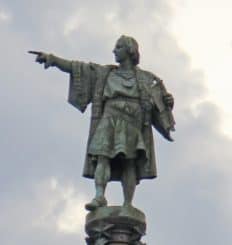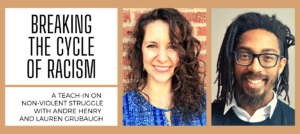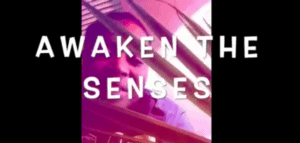
Every October, the United States observes Columbus Day. Some schools and businesses close, as well as federal agencies like the Postal Service. While many Italian-American communities use the day to celebrate Italian heritage, others, sensitive to the history of disease, destruction and attempted genocide against Native Americans, have come to refer to the day alternatively as Indigenous People’s Day. At the heart of this discrepancy on what to call this day is the question of how we as Americans understand and interpret our history. In this article, I will use Columbus Day/Indigenous People’s Day to examine the power of myth undergirding many racist ideas and actions, and how we can address them.
Going to school in the 1960’s, I learned that Columbus “discovered America,” and was the first of many European explorers who came to the unsettled shores of the so-called New World. I learned that Columbus met a few Indians there—some hostile, some friendly—and then built a new civilization and country that came to be known as the United States. We drew pictures and sang songs about the Nina, the Pinta, and the Santa Maria, the three ships Columbus commanded on his voyage. He was portrayed as an adventurer, a hero, and an enterprising leader—an example of someone all should aspire to follow.
However, in 1992 at the 500th anniversary of the Columbus voyage, low-level opposition to the way this holiday was remembered emerged from relative obscurity and took center stage. The Columbus quincentennial became an occasion for debate and dialogue as to whether this day was about adventure or about colonialism, about European entrepreneurial spirit or about Native American genocide, a day for celebration, or a day for reflection and mourning. That debate has continued for the last 25 years. This polarization of perspectives is evidenced in news reports that detail the defacing of Columbus statues, and calls from around the country for these statues to be taken down or at least reinterpreted. At the same, historians like Silvio Lacetti argued in the Philadelphia Inquirer that despite the colonial heritage initiated by Columbus, he is still a figure worth celebrating. Lacetti maintains that Columbus was not the cause of the brutality, manipulation, and disease that nearly wiped out many indigenous tribes in North and South America. Lacetti wrote: “[Columbus] holds a special place in the consciousness of Italian Americans and Hispanic Americans, who strongly identify with his accomplishments,” and that therefore he should continue to be recognized.
How do we address and challenge the myths and historical distortions at the center of the American story that so many whites have been raised to believe and embrace?
While it is true that Columbus cannot be held responsible for the travesties that came after him, he is both an example and a symbol of the way most white Americans think and respond to challenges to the way they have traditionally remembered U.S. history.
Getting the Whole Story
The traditional rendering of Columbus that I received, and that most school children still receive today, exempts Europeans from remembering and taking responsibility for:
- the suffering, tragedy, injustice, and death caused by their ancestors who stole land from Native Americans;
- enslaving millions of Africans brought to the United States against their will;
- importing Chinese workers to build railroads and then denying them citizenship;
- annexing formerly Mexican territories and then treating the people living there as second-class citizens;
- imprisoning Japanese-Americans during World War II simply for being Japanese;
- denying Jews fleeing persecution by the Nazis entrance into this country; and
- continuing the same patterns of behavior today that deny people of color basic human rights and security.
Furthermore, not only did people of color suffer these indignities, so too did poor whites. Two recent books, White Trash: The 400-year Untold History of Class in America by Nancy Isenberg, and Hillbilly Elegy: A Memoir of a Family and Culture in Crisis by J.D. Vance, document how poor whites have been used as fodder for the capitalistic ventures of the wealthy proprietors and landowners, as tenant farmers, underpaid workers, and forgotten casualties of our post-industrial economy. While these whites currently comprise a critical part of President Trump’s loyal base, they actually have far more in common with the people of color whose calls for justice they have been set up to oppose.
If we are going to talk about Columbus, then we need to tell the full and true story of what his voyage set in motion.
A Symbol of Distortion
While Columbus cannot be held responsible for all these atrocities that came after him, he is a symbol of the distorted American myth that many white Americans embrace. While histories appeal to the mind, symbols touch the heart. Discussions on matters of race challenge the near-sacred national symbols that most whites have been raised to respect and honor. Whether we are talking about the history of Native Americans suffering at the hands of European settlers, the brutality of masters against their African slaves, or the disproportionate violence inflicted by police against persons of color, too often white people are not concerned about the facts (i.e. what actually happened), but rather what accepting the truth of those facts might mean for their worldview and way of life.
What does it mean when we regard the land on which we reside, not as something we own, but as something that was stolen? What if the great myth of progress of how this country was built is tainted by the reality that millions of people were bulldozed out of the way, so European-Americans could take the prominent place in the world? What if our heroes like Columbus, George Washington, Thomas Jefferson, and even Abraham Lincoln, did not see African-Americans and Native Americans as full human beings? What if facts bear out that law enforcement routinely treats young men and women of color more harshly than whites, and when those same folks go to court they are routinely given more severe and longer sentences than whites committing the same crimes? What if our Pledge of Allegiance lies when it says we are promised: “liberty and justice for all?”
A well-known African proverb states: “Until the story of the hunt is told by the lion, the tale of the hunt will always glorify the hunter.” We live in a time when the lion’s story is beginning to be told, and the hunter’s tale has been shown to be extraordinarily lacking. Yet, many whites want to hang on to their hunter’s tale of America and have difficulty facing its reality—not because they are blind or ignorant, but because the lion’s tale threatens them at the level of the heart, at the level of emotions, at the level of a symbol and myth that has shaped and guided their understanding of who they are.
(Click here to see a wonderful visual on how human brains respond to the challenge of accepting new ideas.)
A Heart, Not a Head, Issue
When trying to talk with our white friends, co-workers and family members, simply overwhelming them with facts and figures, however true they are, will not move many folks—because we are dealing with a heart issue, not a head issue; we are dealing with cultural symbols and not simply a need for more information. Race and racism are ultimately matters of identity and one’s sense of being in society, and thus must be approached in a different way. So what can we do? How do we address and challenge the myths and historical distortions at the center of the American story that so many whites have been raised to believe and embrace?
First, we who seek to talk with whites about race need to be informed. We need to know the facts and where the full truth lies. We also need to recognize that the truth is complex and multi-faceted. Columbus was both a brave adventurer and a colonial oppressor. Native Americans were both victims and collaborators in their own demise. Africans were enslaved by European traders; slaves were bought from African captors. Police officers provide security and safety to communities, but some of them use their authority to debase, injure, and even kill defenseless victims. The truth is complex and messy, and we need to acknowledge that messiness. Simply challenging an oversimplified understanding of reality with another oversimplified version of the same reality will accomplish little.
The truth is complex and messy, and we need to acknowledge that messiness.
Second, we need to realize that whenever race enters the conversation with white folks, very quickly we move from the rational to the emotional. We may find ourselves debating “facts,” but the real conflict is what those “facts” mean in our hearts and guts. Almost every issue I have discussed in this series, from whites’ defensiveness to the idea of privilege to the insistence of colorblindness to white deflection of race issues, are matters of the heart, not the head—signs of emotional attachment to certain deeply-held beliefs, rather than a rational defense of those beliefs. Realizing we are dealing with an emotionally charged set of concerns means we have to acknowledge and even affirm the power of those emotions. In challenging many of our race-based myths and distorted views of history, we are asking people to let go of things so intrinsic to who they are, it can be very threatening. And we are not asking them to change just once, but rather to enter an ongoing process of dying to a way of thinking and being that may take them the duration of their lives.
I have been working on my own racism and distorted myths for over 40 years. Recognizing my need to deal with my own racially distorted beliefs, I try to participate in training on topics like whiteness, anti-racism, cultural awareness, and cultural competency two or three times a year. I regularly read books on the topic and listen to speakers. I participate in a monthly group that discusses race-related concerns. While I have learned a great deal and significantly grown over the course of my adult life, I still find myself confronting deeply-held beliefs that I need to examine and transform. That is why I refer to myself as a “recovering racist,” because the process continues and the work goes on.
Finally, if we are serious about trying to talk with white folks about racism, we need to commit to the long haul. Simply shouting at people and telling them they need to change may make us feel like we are being prophetic, but will succeed only at driving white folks back into their shells. I have heard a lot of anti-racist speakers criticize so-called “white fragility” and say to their white audiences, “Get over yourself and buck up.” It sounds good, but it doesn’t work, except with those whites who have already committed themselves to the journey. Confronting racism in ourselves is deeply painful and uncomfortable, and takes time. This means we need to be willing to hang in with people, go back again and again, and not be afraid to raise race-related issues for fear of a negative reaction. We should expect defensiveness, anger, guilt, and grief, and commit ourselves to stand in despite the blowback.
Because we need to be committed for the long haul, the people we are closest to—our families, friends, and co-workers—are precisely the people we need to talk to about these issues. We need to keep in mind that often the stronger the reaction, the closer we are to seeing a change in a person. We need to realize that our care and concern for people may be our most effective tool in seeing change happen. We need to recall our own process of change, and where relevant, admit to the other that we have had to go through the same process we are asking them to go through now.
By staying informed, recognizing the emotional rootedness of whites’ reactions to race discussions, and being willing to continue the conversation over the long haul, we will be able to confront the myths, the distortions, and even the lies that make up the traditional American story. Lest we get frustrated and discouraged, let us keep in mind that in so doing, we are calling people to live up to the values and ideals that our founding documents and faith traditions call us to. We are calling our white brothers and sisters out of blindness and defensiveness into the light of freedom and truth.
Drick Boyd is the author of several books, including Paulo Freire: His Faith, Spirituality and Theology. Drick’s areas of interest include urban theology, race and ethnic relations, leadership, social activism, and popular education; he is particularly focused on community issues of gun violence prevention, urban education, and interfaith and inter-racial coalitions for addressing city issues. Married with three adult children, he is a cycling enthusiast, a sports fanatic, a lover of books, and a guitar player, who enjoys spending time with colleagues, friends, and family.
is the author of several books, including Paulo Freire: His Faith, Spirituality and Theology. Drick’s areas of interest include urban theology, race and ethnic relations, leadership, social activism, and popular education; he is particularly focused on community issues of gun violence prevention, urban education, and interfaith and inter-racial coalitions for addressing city issues. Married with three adult children, he is a cycling enthusiast, a sports fanatic, a lover of books, and a guitar player, who enjoys spending time with colleagues, friends, and family.


